About this detail of the Tiger
The Tiger had an MG34 fixed in its mantlet, on the right side of the turret, operated by the loader. Storage for four ammunition bags ("Gurtsäcke") was provided on the turret's right-hand wall.
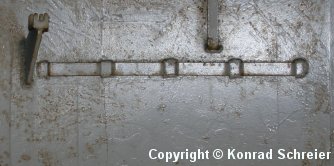
A strip of metal, folded to make four brackets, was welded directly to the wall. This example is in the American museum Tiger. The position of this strip was identical in the first two layouts of the turret.
It's noteworthy that there is no protection against splash in Krupp's turret design. The ammunition bags on the hull wall, designed by Henschel, were protected by metal panels. Both walls had the same thickness.
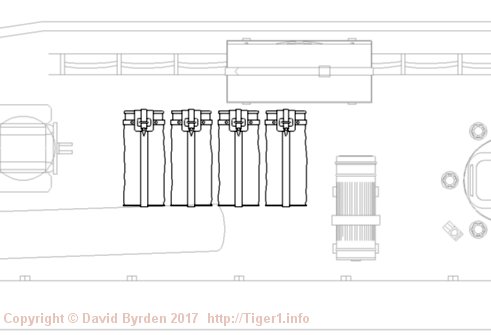
This diagram shows how the ammunition bags sat in their brackets in the original Tiger turret design. They were placed above the counterbalance spring of the main gun, and under the MG accessories box. (Not all of the other equipment is drawn here.)
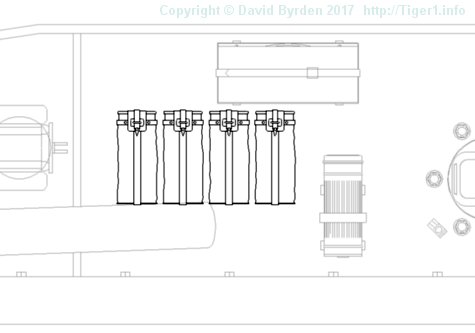
The turret's wiring was soon moved down to the turret ring, and a new cable was run vertically beside the ammunition bags, but they were not moved. This is how the equipment was placed on the right wall of the American museum Tiger.
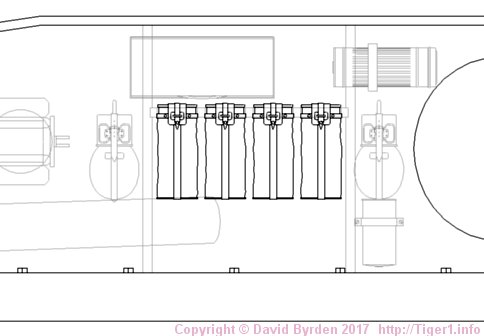
At the 56th turret the internal layout was changed, with all equipment placed on metal strips standing clear of the walls. The bracket for the ammunition bags was retained but was welded to two vertical strips; it was also moved closer to the new hatch at the rear. This diagram corresponds to Tiger "131" at Bovington Museum and it was used for the remainder of the "Early" Tigers.
Befehlstigers had no MG in the turret and therefore no MG ammunition there. The 4 ammunition bags omitted from the turret were part of the 10 bags omitted overall from a Befehlstiger [1, see 3.2.5] . Notice that the equipment in the central area of the diagram is all pertinent to the MG, unlike the earlier turret layouts. The designers had Befehlstigers in mind. In a Befehlstiger, this area was used for a board carrying communications connector boxes.
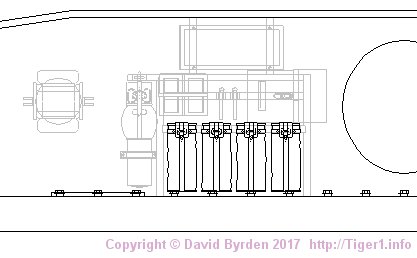
The turret redesign for "Mid" Tigers forced a new layout for its internal storage. With the counterbalance spring moved away, the ammunition bags could now be placed as low down as possible.
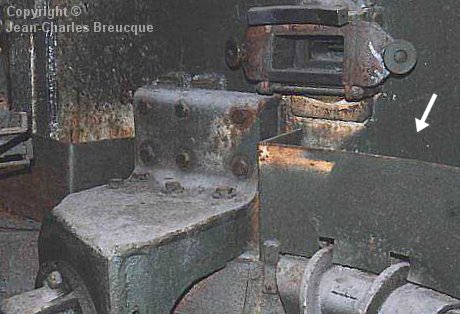
Turret storage was simplified at an unknown time, probably November 1943, and so the second half of Tiger production had open bins on the turret ring instead of boxes and brackets on the walls. The bin indicated here is under the right-hand vision port. A smaller bin can be seen in the extreme front corner of the turret.
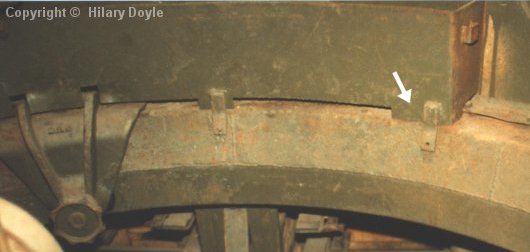
As this photo shows, the outer wall of these bins was flush with the surface of the turret ring's cowling. (This is the Saumur museum Tiger which has been painted green post-war.)
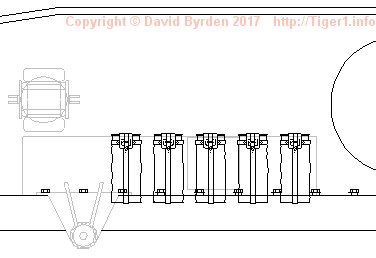
Ammunition bags were hung on the outside of this bin. Four or five bags could easily fit on it, and more if they were draped over the travel lock.
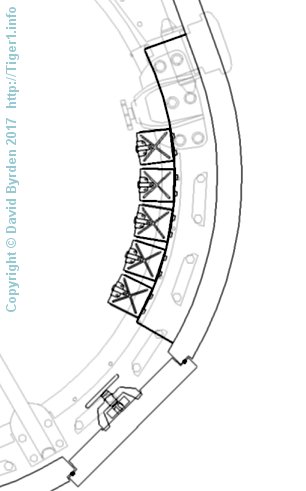
As this plan view shows, the bags crowded the loader's area a little, especially if he wanted to sit in his seat.
Eighteen unused Befehlstigers were converted into standard Tigers in late 1943 due to production shortages; Kubinka Museum has one. It is a "mid" Tiger. In the conversion, the radio communications boxes were not removed from its turret wall. Instead, metal strips with holders for the MG accessories were welded immediately forward of the turret's side hatch. They include positions for 4 ammunition bags.